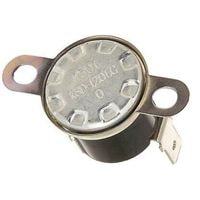Hotpoint Microwave not heating. It’s an inconvenience to lose the ability to reheat food and drinks in mere minutes. Microwaves are a bit of a mystery to most of us, so it’s natural to assume that they will have to be replaced the moment they stop working.
There are a number of parts that can be responsible for the issue, from door switches to magnetrons.
With the help of a multimeter, you can troubleshoot the most common problems on your own; just be sure to unplug the microwave before inspecting the inner workings.
However, if you’re unsure of how to approach the problem, it may well be best to obtain help from a professional.
Hotpoint Microwave not heating
If your Hotpoint Microwave not heating, don’t worry! When a magnetron isn’t getting enough voltage to operate it, then the microwave won’t heat.
So if you notice that your microwave suddenly stops heating food- items, check that the magnetron is being supplied with plenty of standby power or “high voltage” coming from the diode. If this fails to work, replace the diode with a new one and try again.
Here we listed some common issues and their remedies.
Faulty Diode
A diode is an electronic component that is used in most microwave ovens to regulate voltage. The diode converts the high-voltage A/C from the transformer into low-voltage D/C for the magnetron, which is the tube that produces microwaves.
Most failures of a diode involve it is becoming damaged and burning out.
Check the diode with an ohmmeter, and if necessary use one diode instead of two as a test by putting a battery in series as a power source instead of alternating current from your house wiring.
If the check turns up any problems, then look for these symptoms: a melted case, dark markings on its surface or other signs of physical damage caused by arcing.
Defective Magnetron
The magnetron is the microwave’s brain. It acts as a kind of “stove” by generating electromagnetic radiation at about 2,450 megahertz (MHz) to heat up your food using microwaves rather than fire.
You need a magnetron if you want a working microwave. These devices do have a life expectancy and if it stops working or get damaged, you’ll need to replace them with a new one.
Door Switch Issue
Most microwaves have three or four-door switches. You can determine if any of them are faulty by using a multimeter. When you close the microwave door, the switches are designed to ensure that the door is securely closed.
If any of these doors don’t activate, your microwave will cease to function which can be dangerous as it could lead to an electrical short.
So make sure they’re all working okay by ensuring they’re making contact when you close the door, then check them with a multimeter.
Damage Thermal Fuse
A thermal fuse is used to provide protection to the microwave by cutting off the power supply if it reaches a temperature higher than normal.
To determine whether or not the thermal fuse has been damaged, one can use a multimeter to test its continuity. If there isn’t continuity between the two ends of the fuse, then it must be replaced.
A thermal fuse cannot be reset – if it is burned out, it needs to be replaced immediately.
Defective Main Control Board
Another common problem may be that the main control board is defective, but this is rarely the case.
These boards are often misdiagnosed before replacing the control board, check all of the more commonly defective parts such as switches and power supplies.
If you have determined that all of the other components are working properly, replace the main control board.
Thermo protector Problem
The Thermo protector is a test switch incorporated inside microwave ovens as a safety measure. The thermostat activates the Thermo protector when too much heat builds up, cutting off power to the microwave when needed.
If it trips then you should measure its continuity with a multimeter to gauge whether or not it requires replacement. It will either be good or closed. But if it measures open, then it has to be replaced because open means broke.
Related Guides
